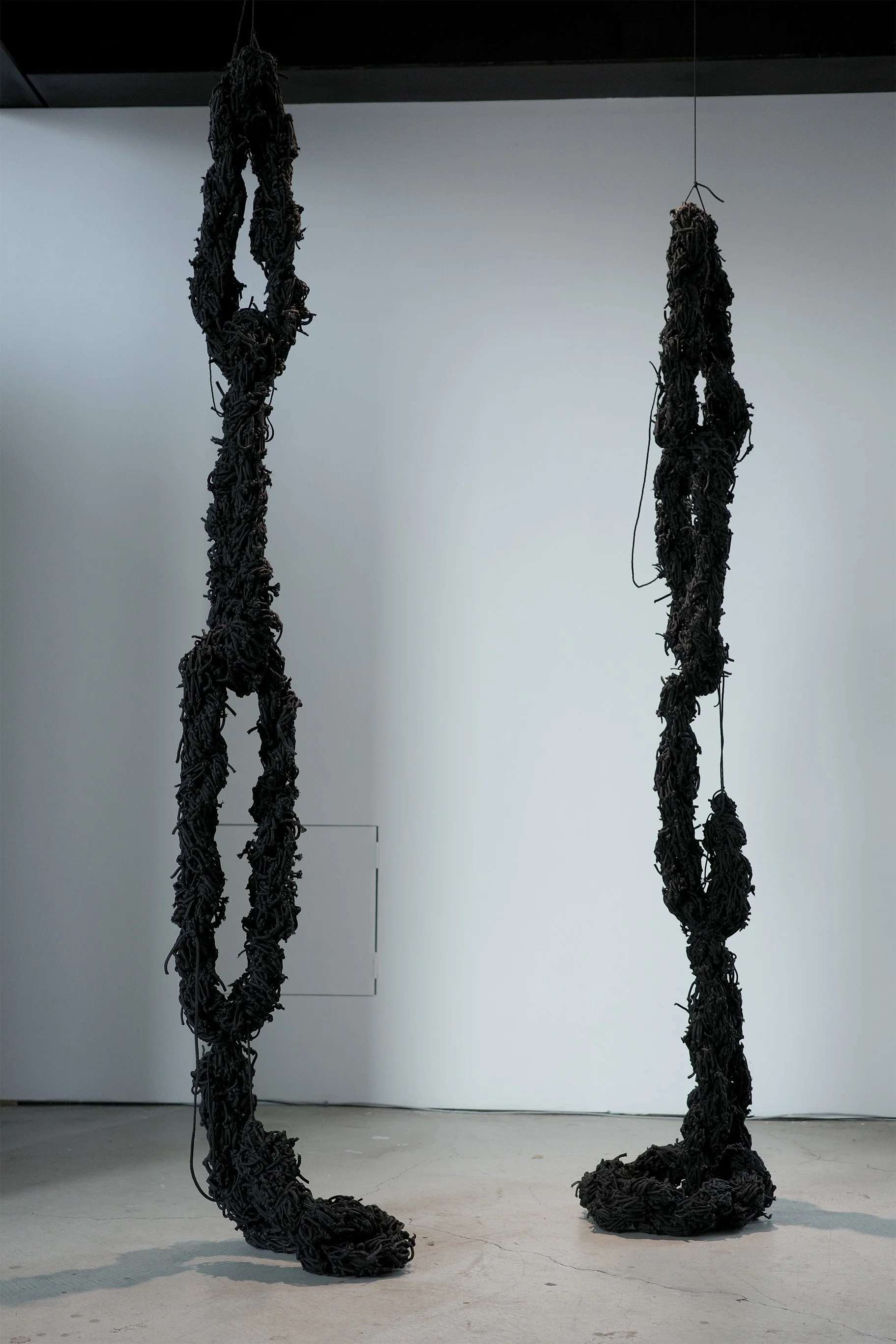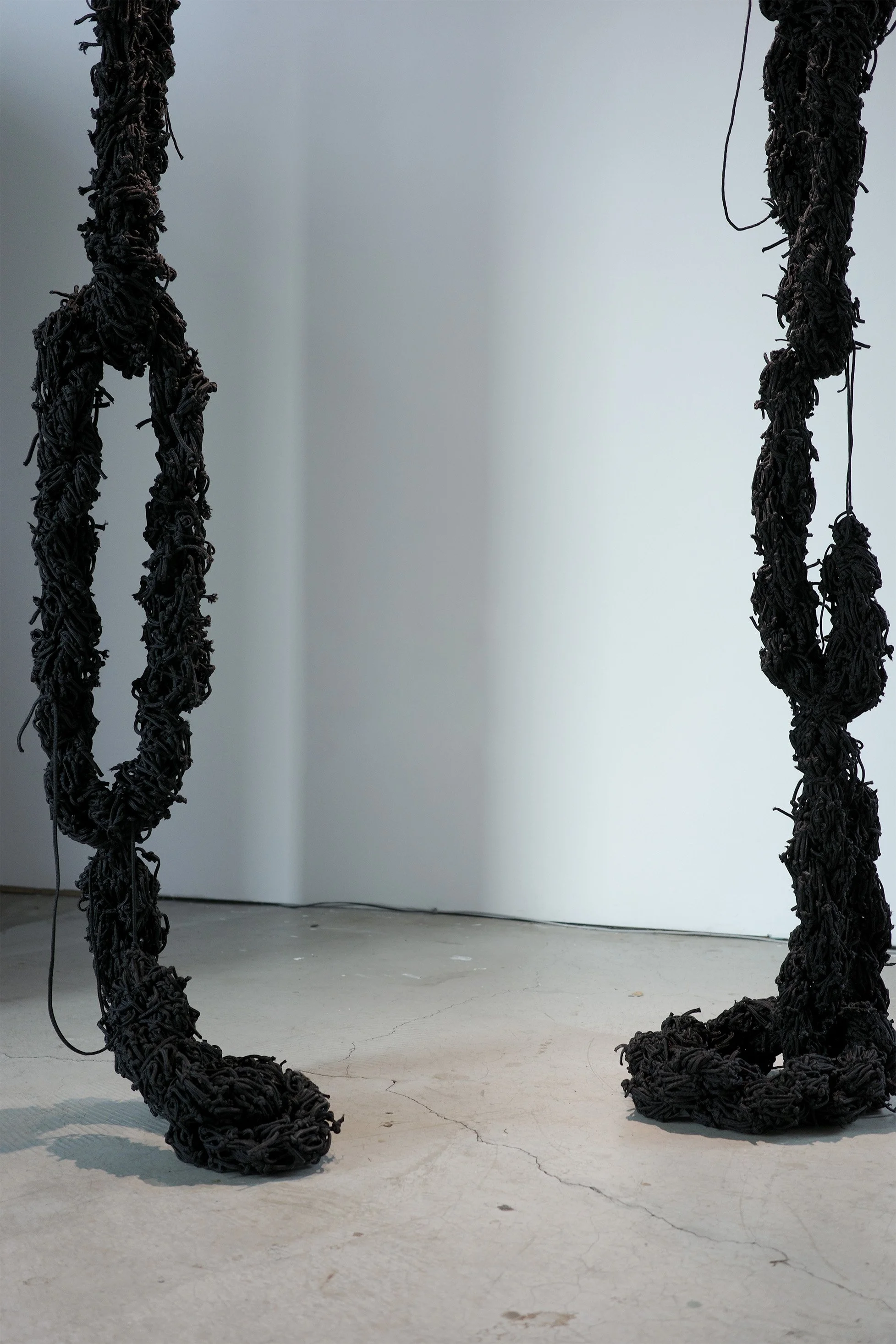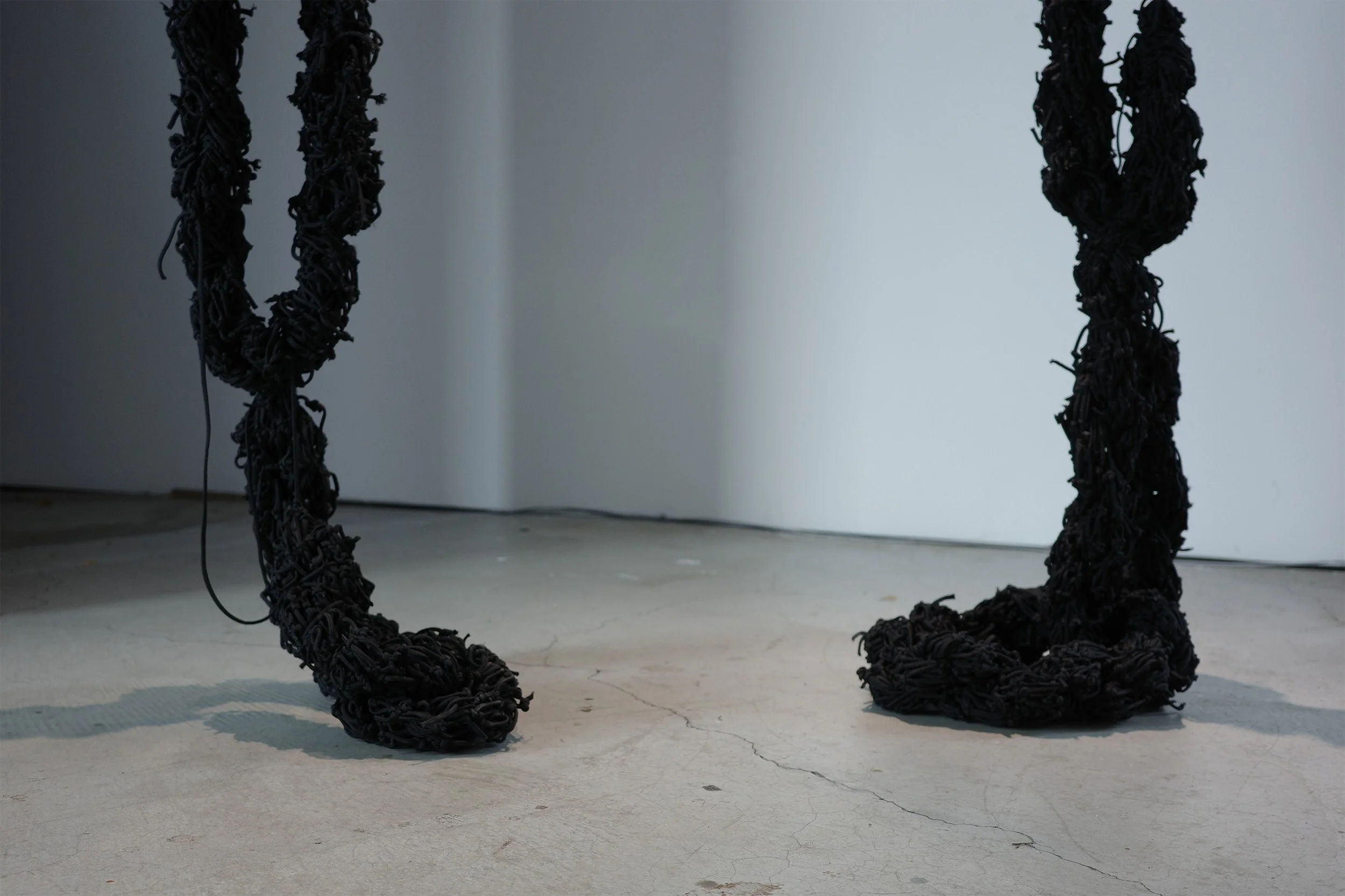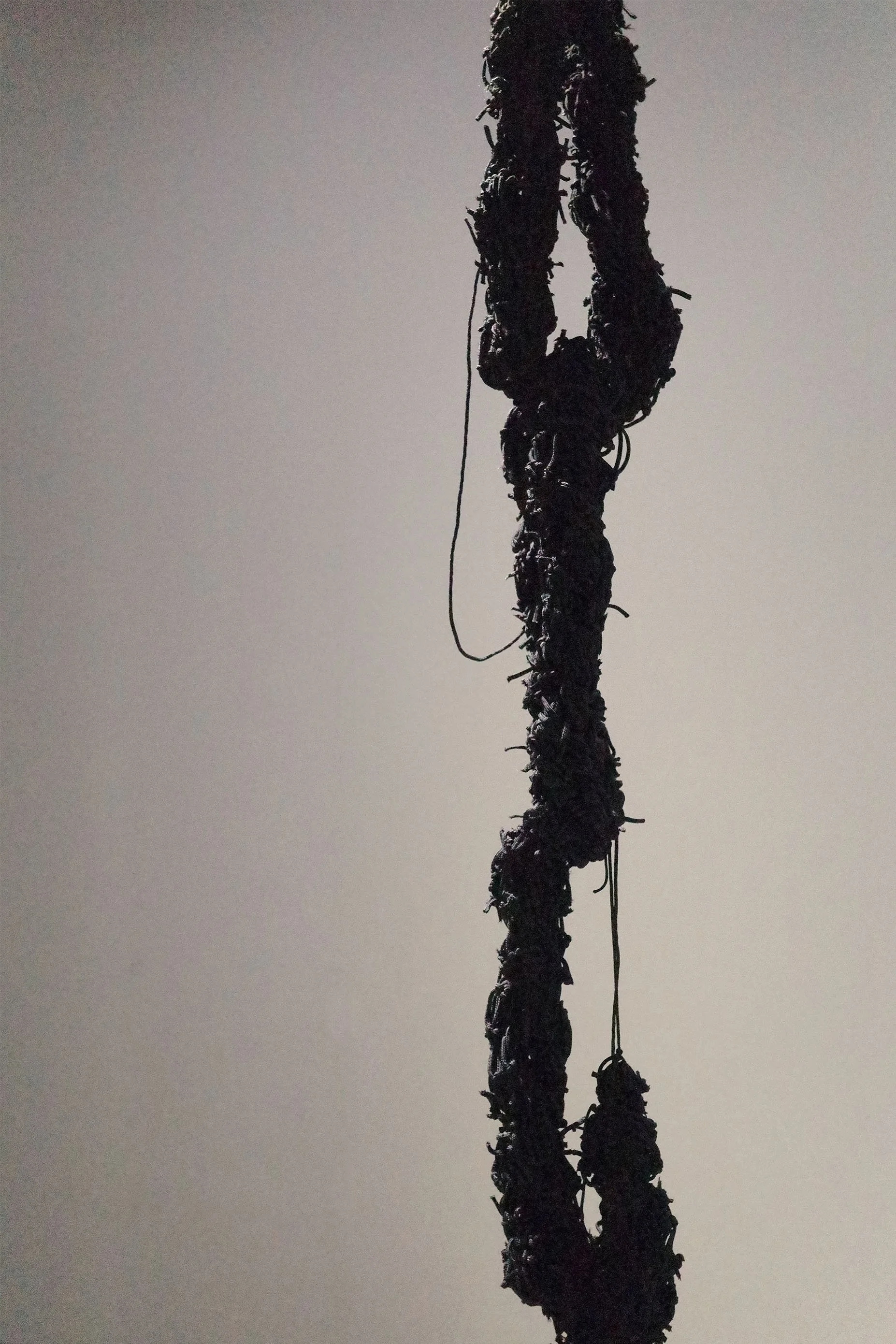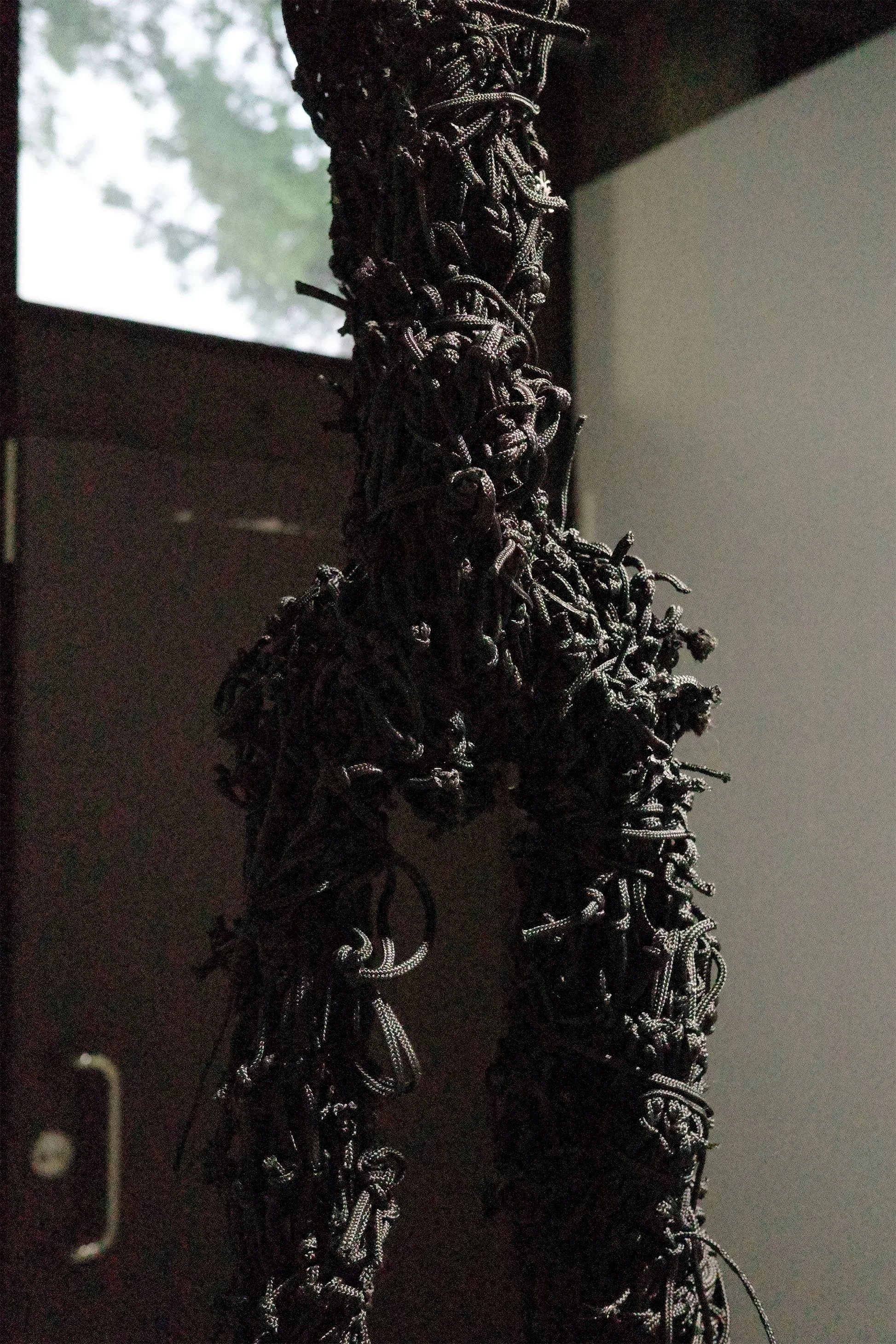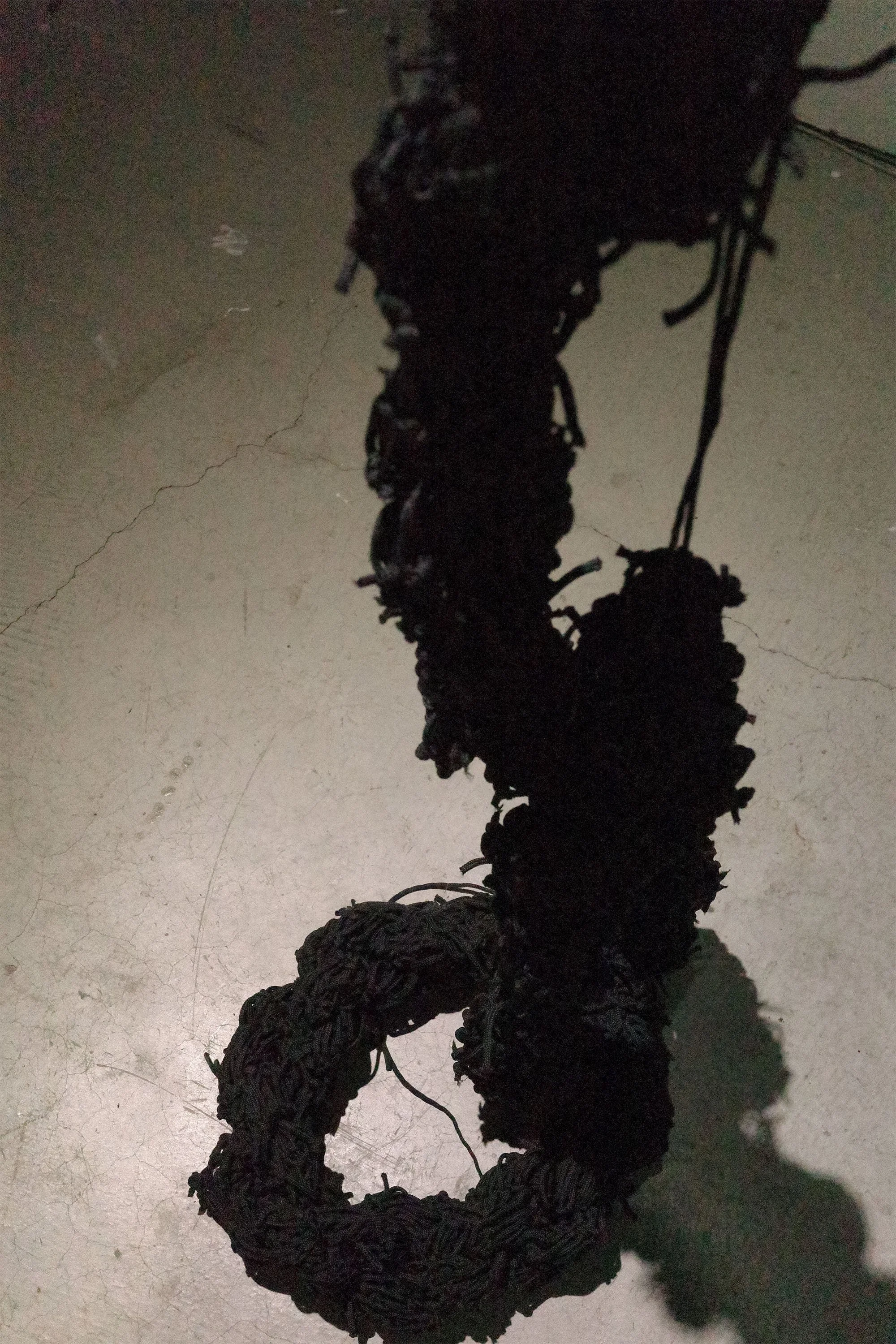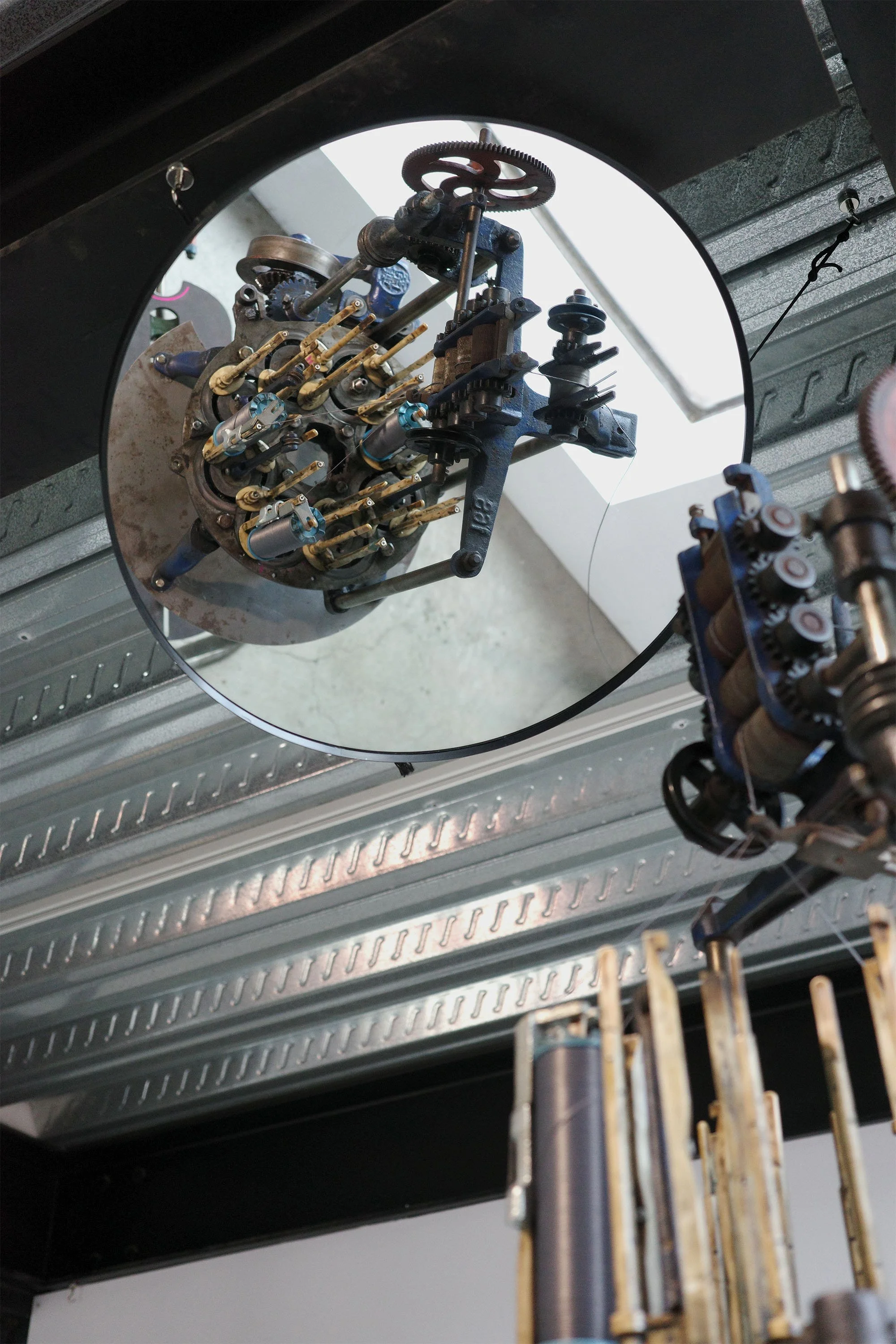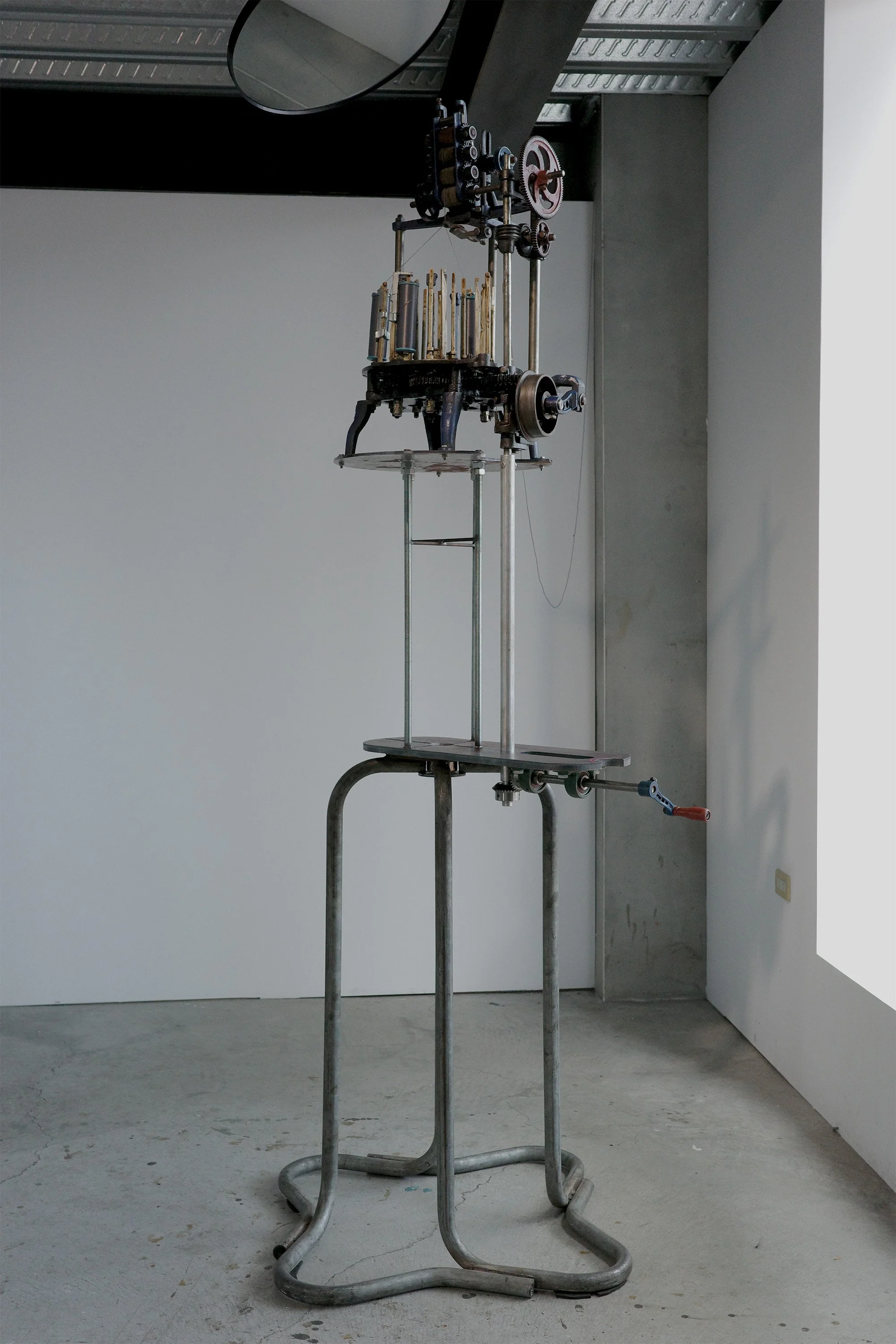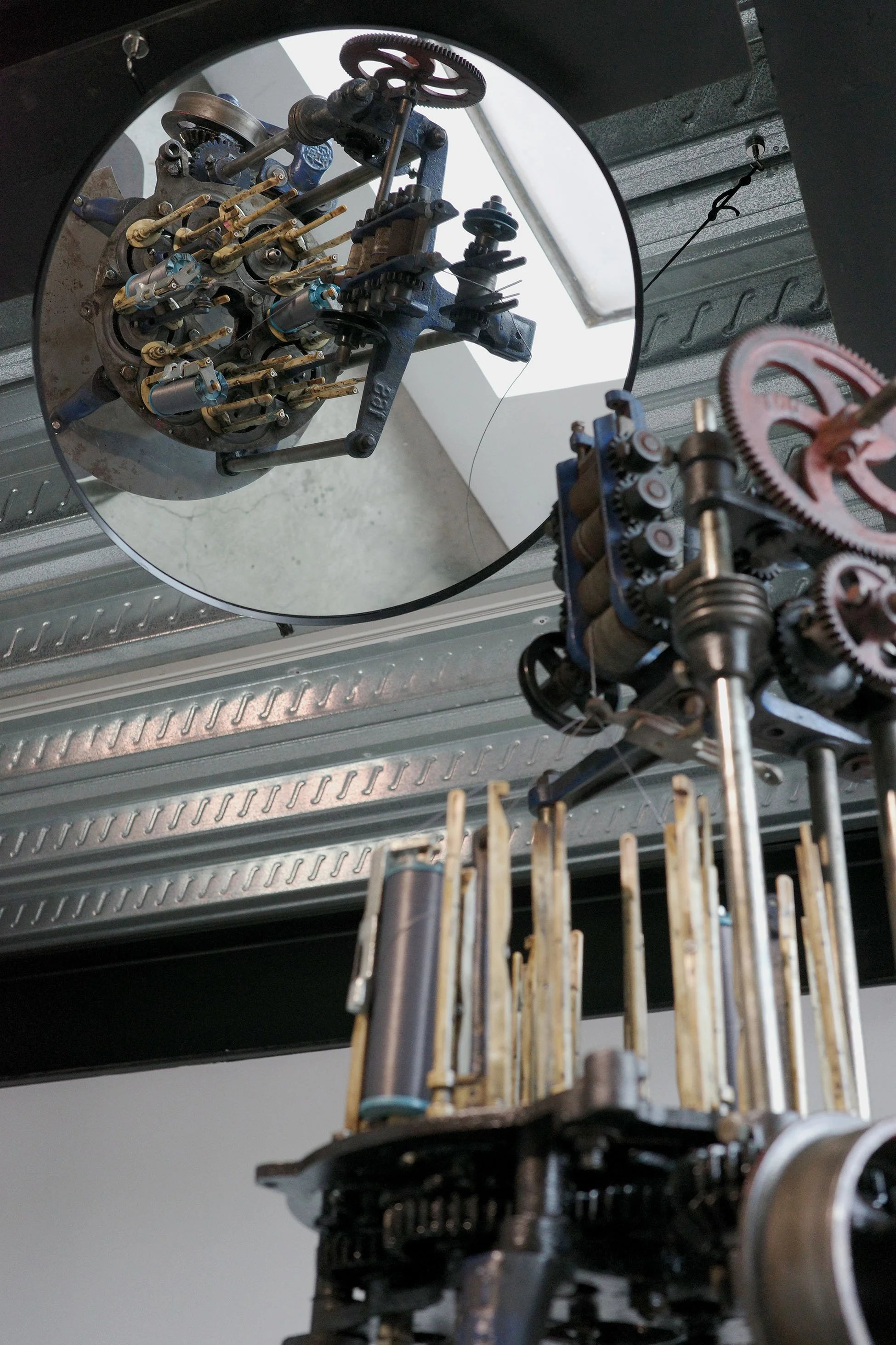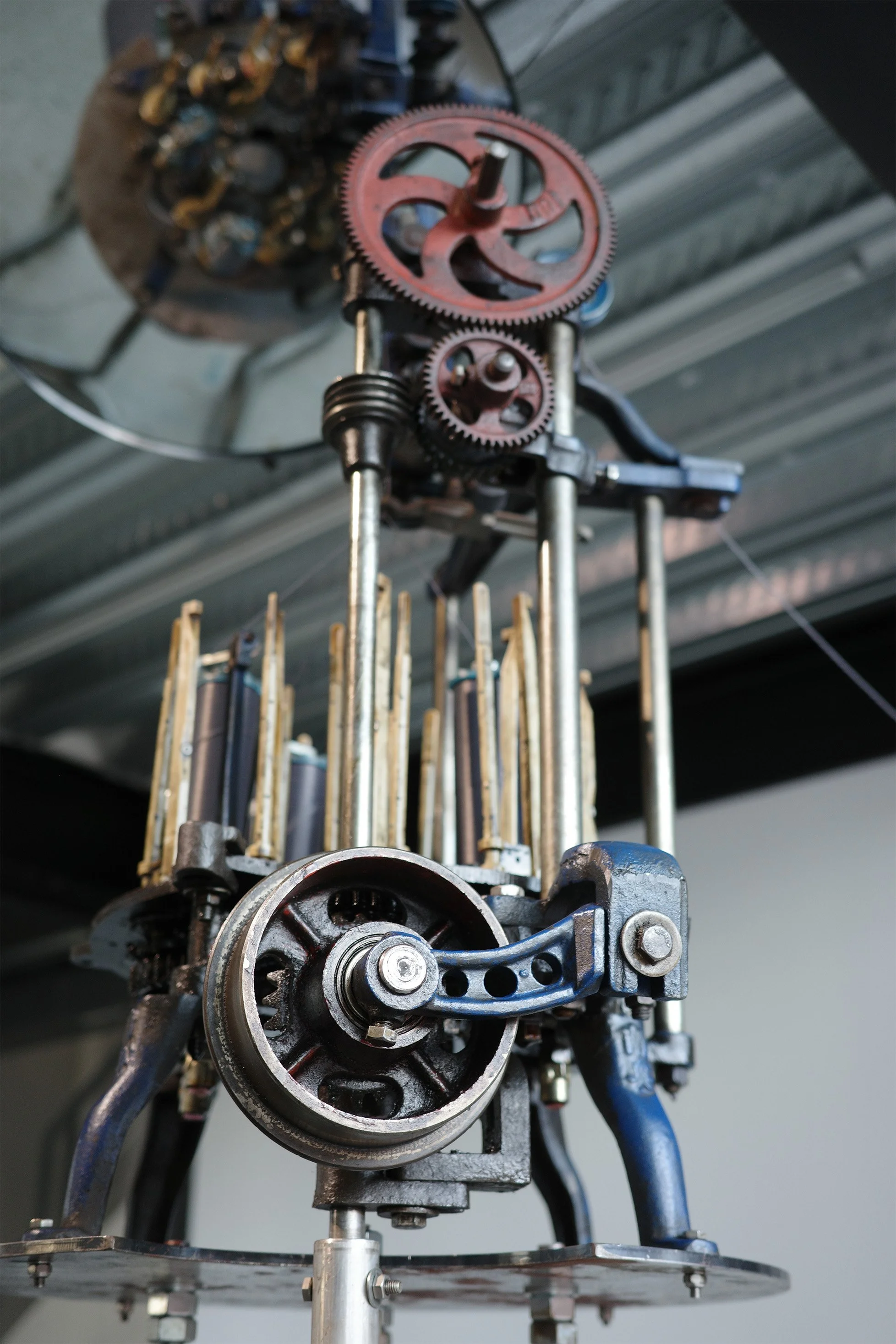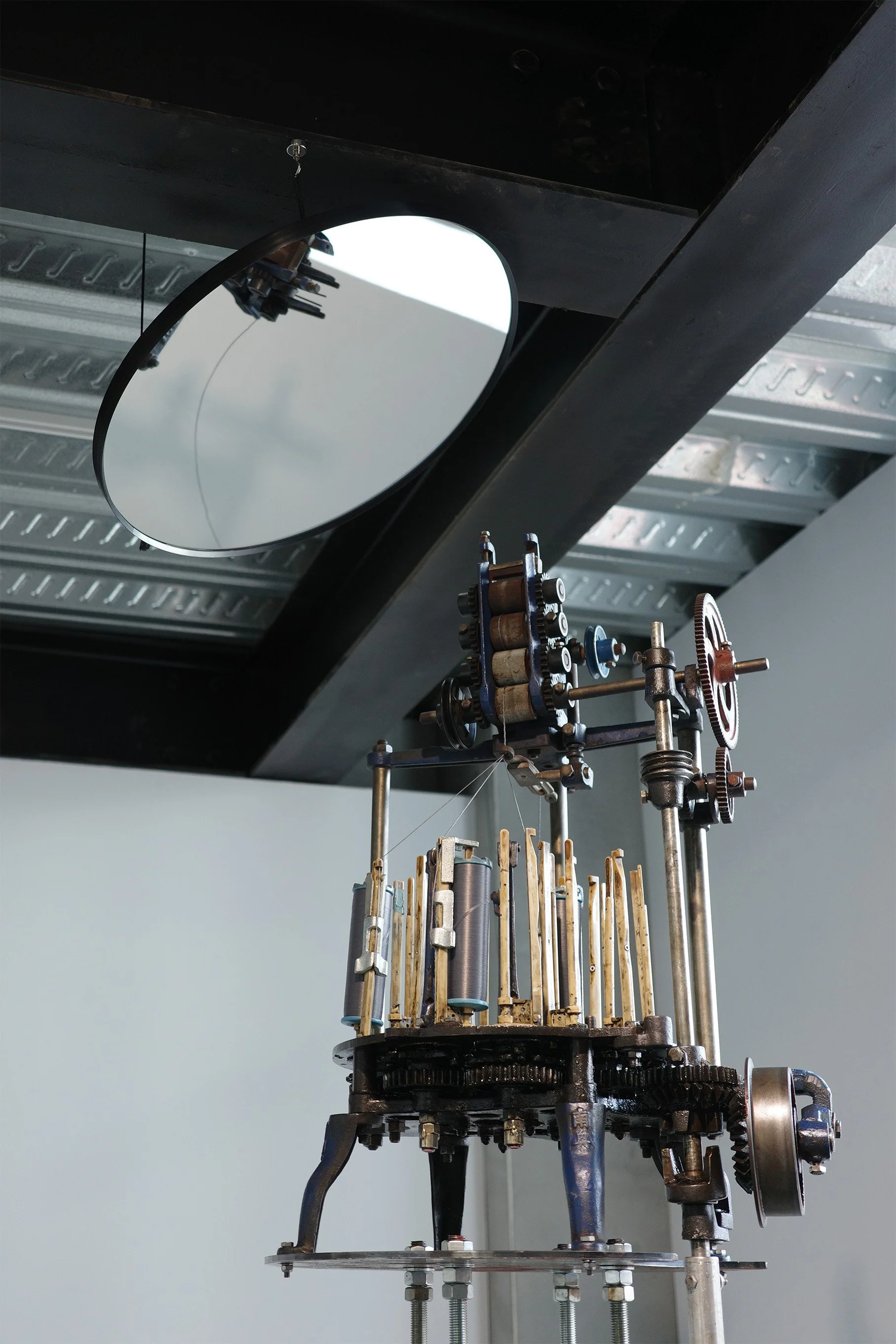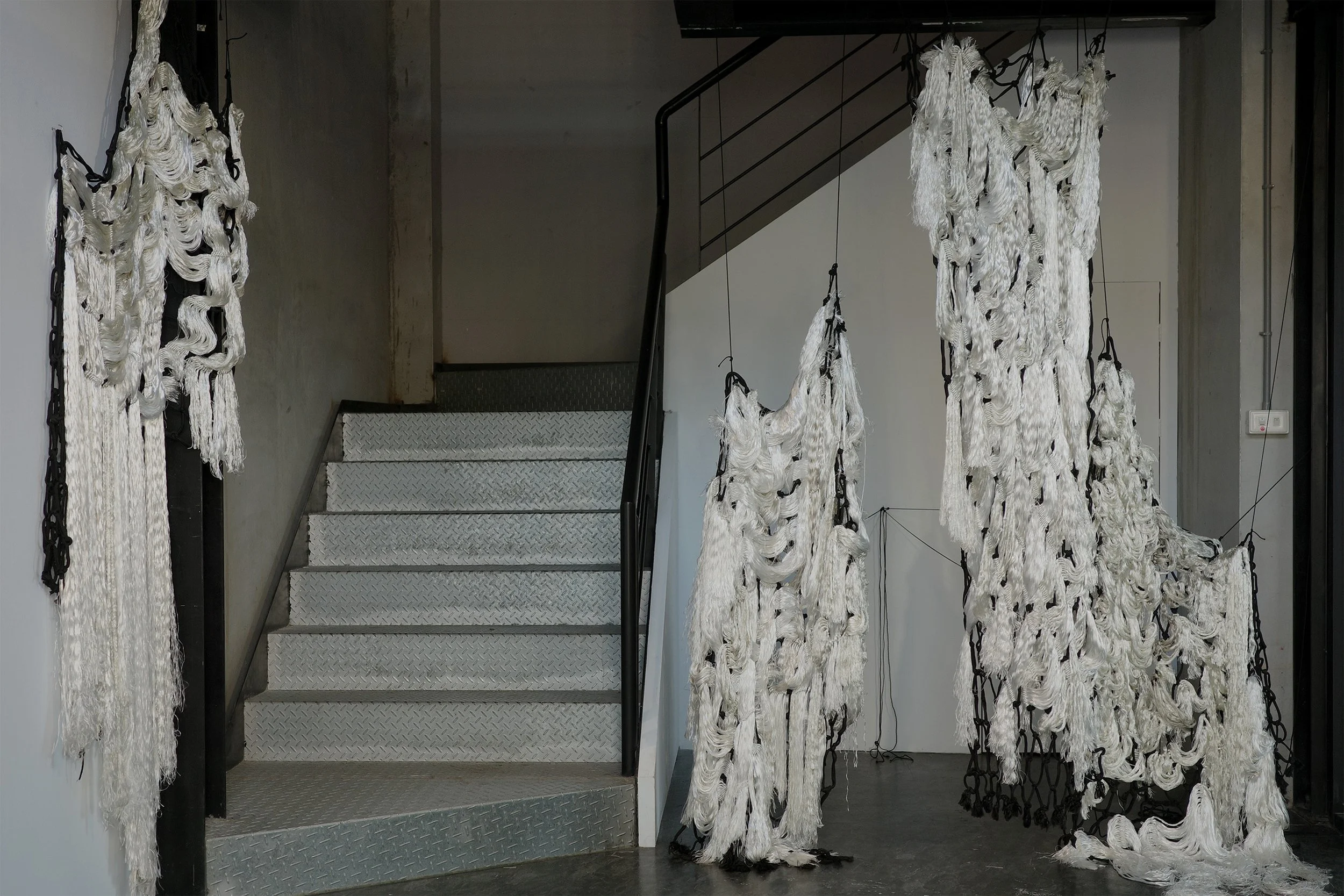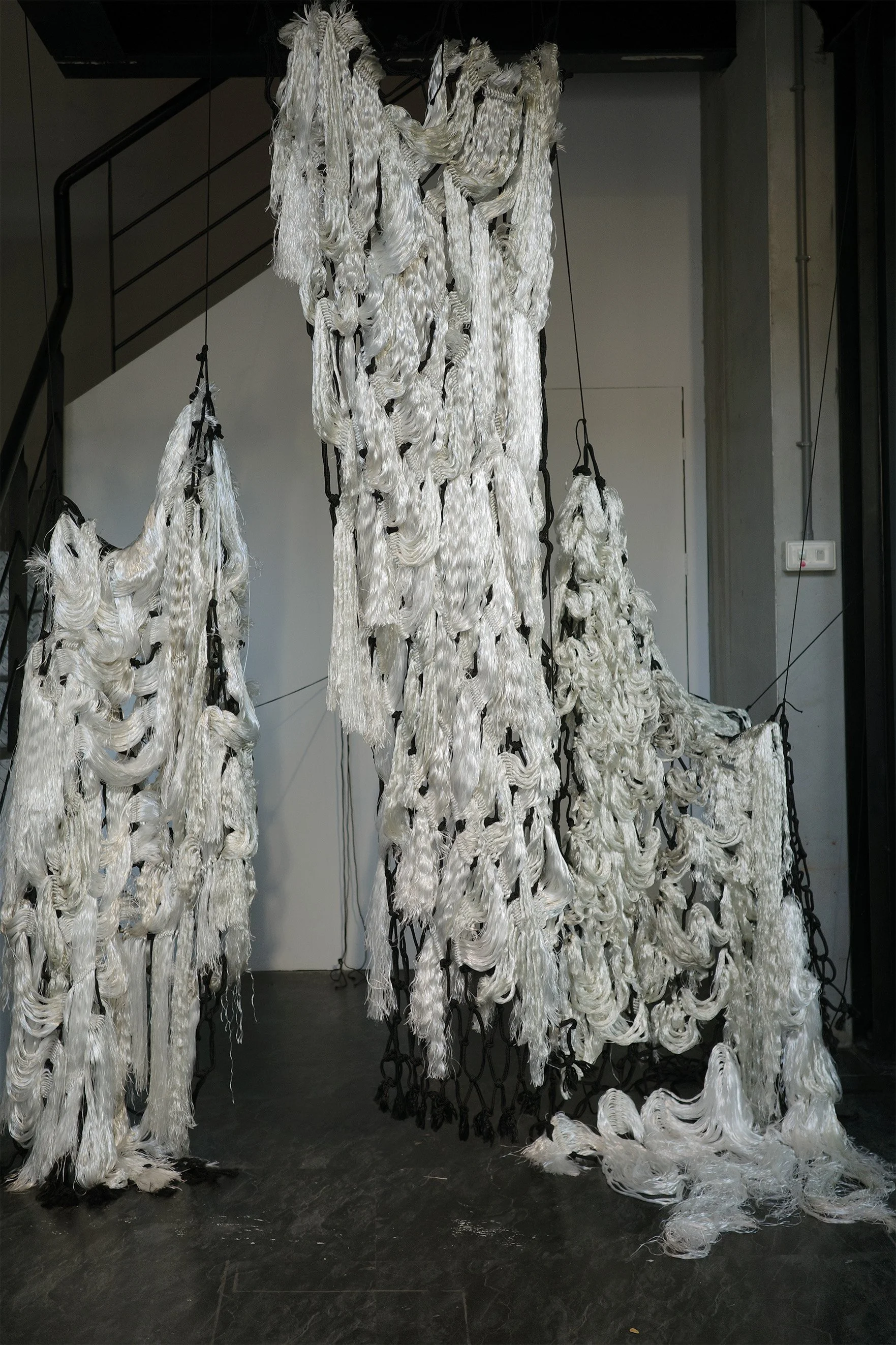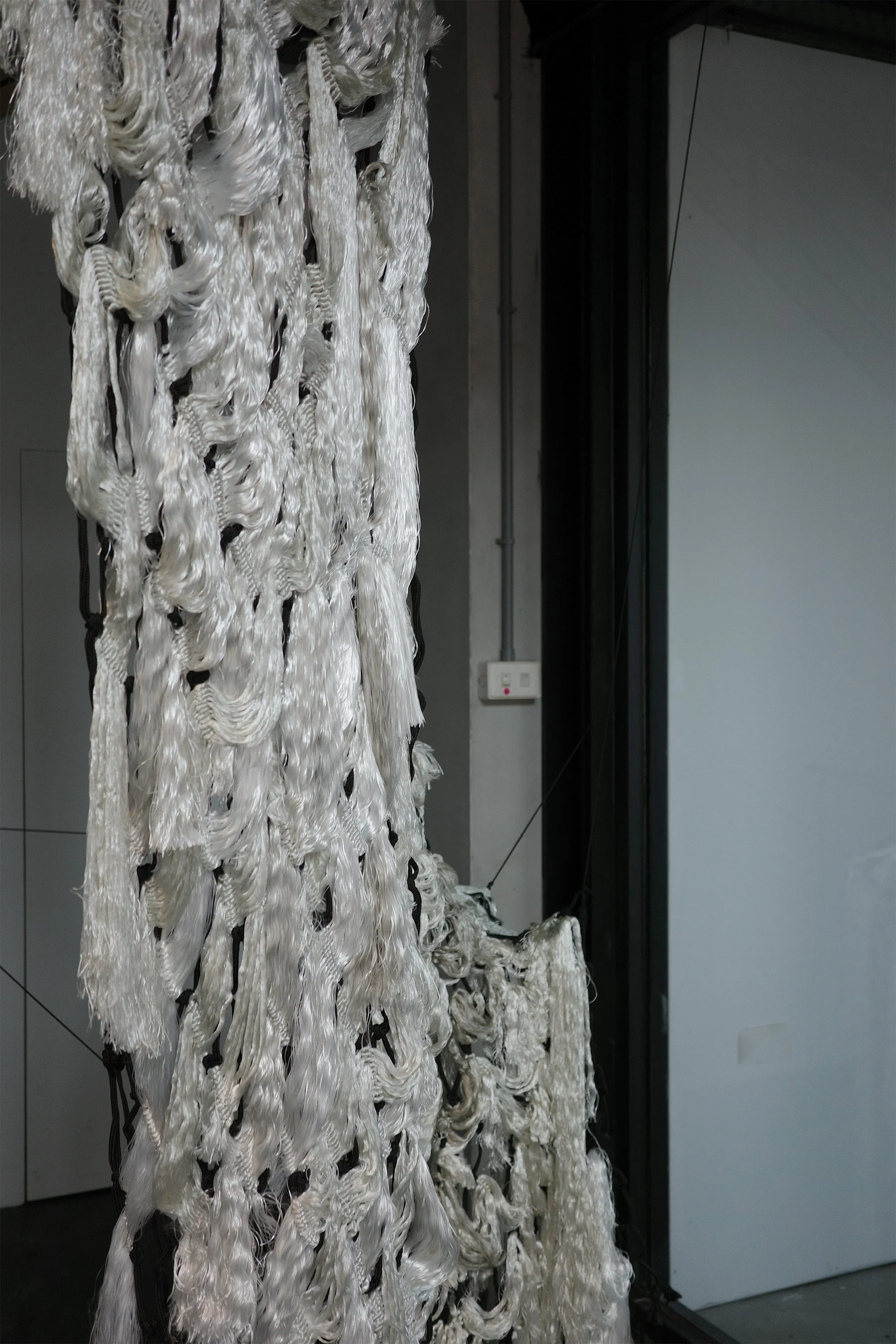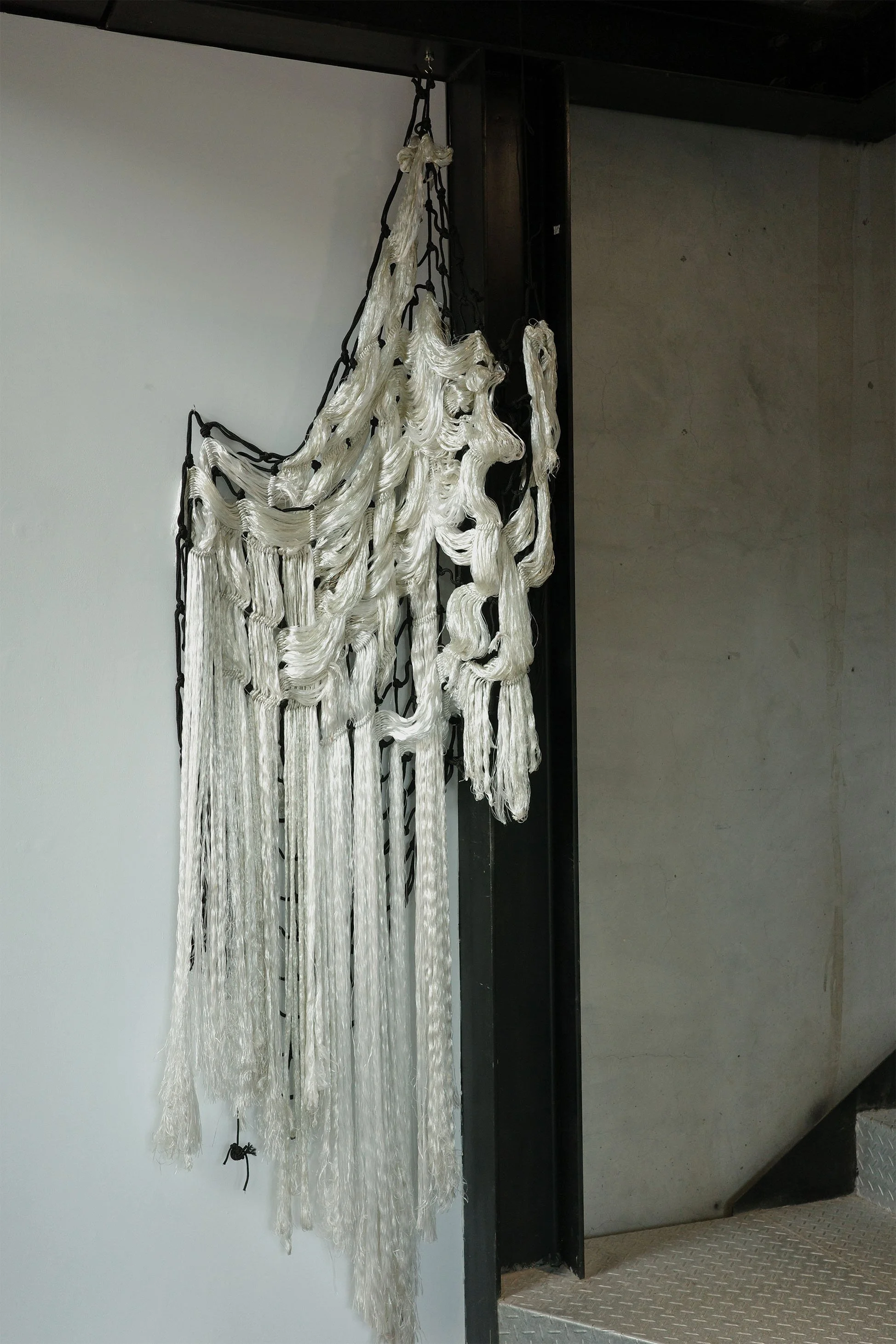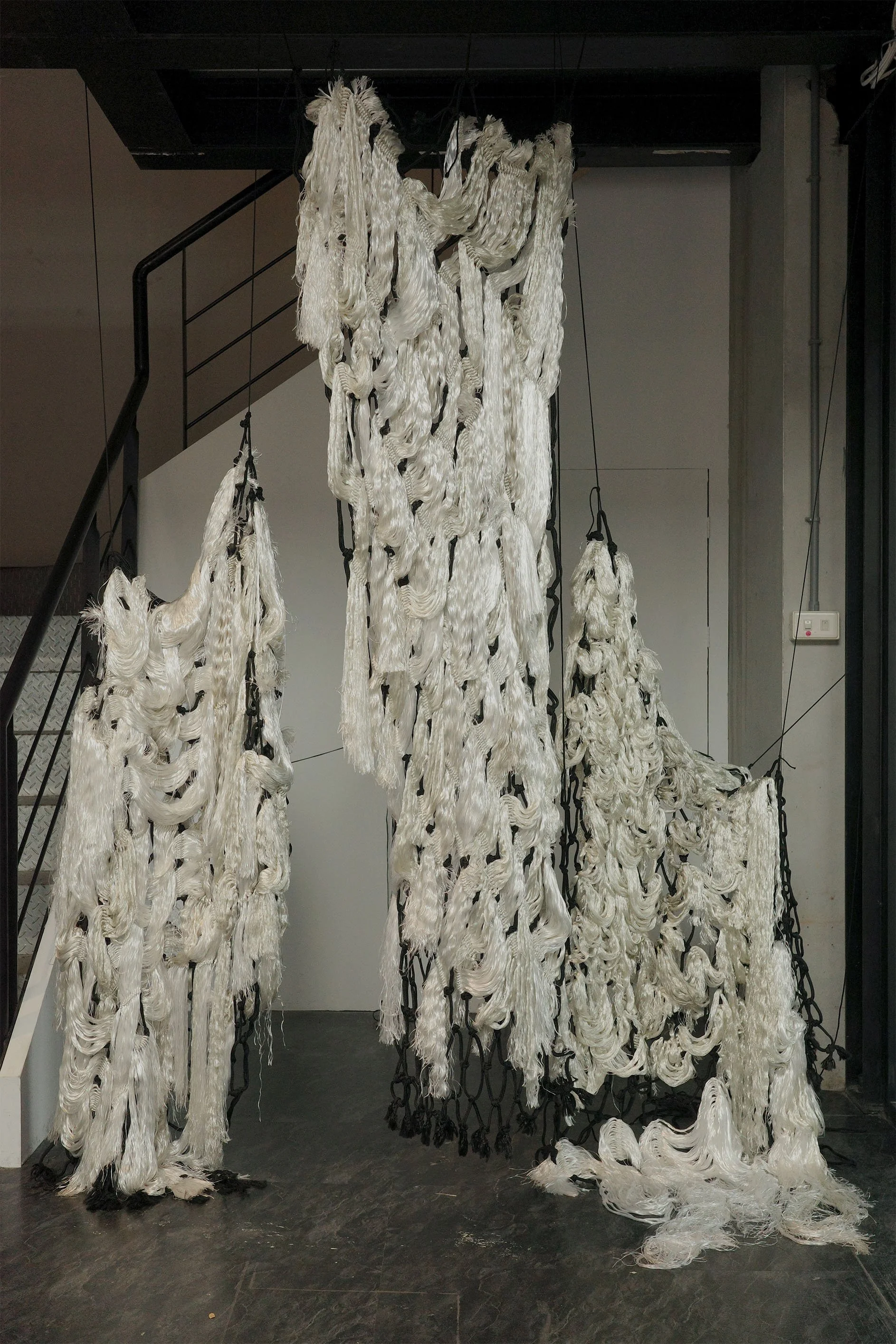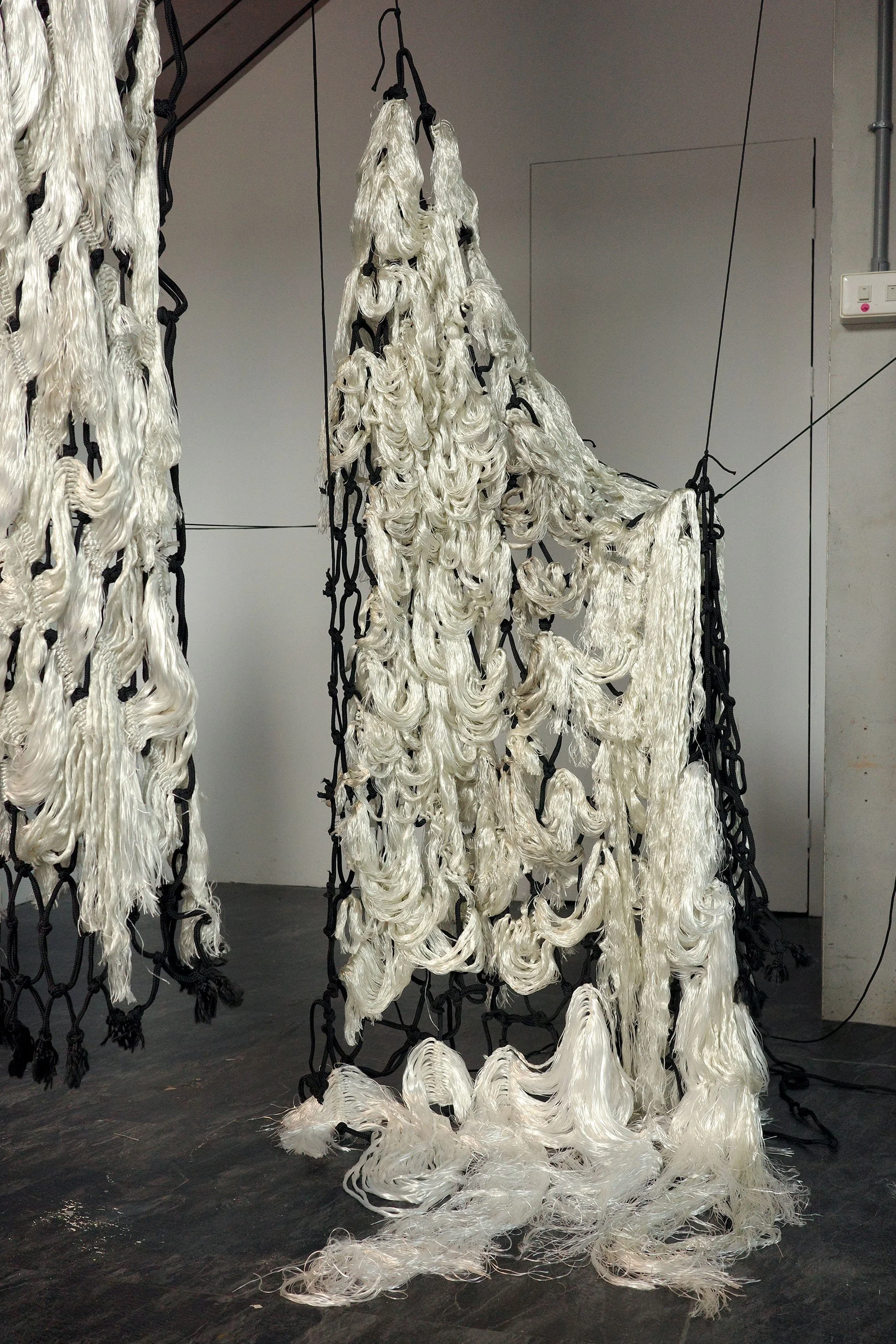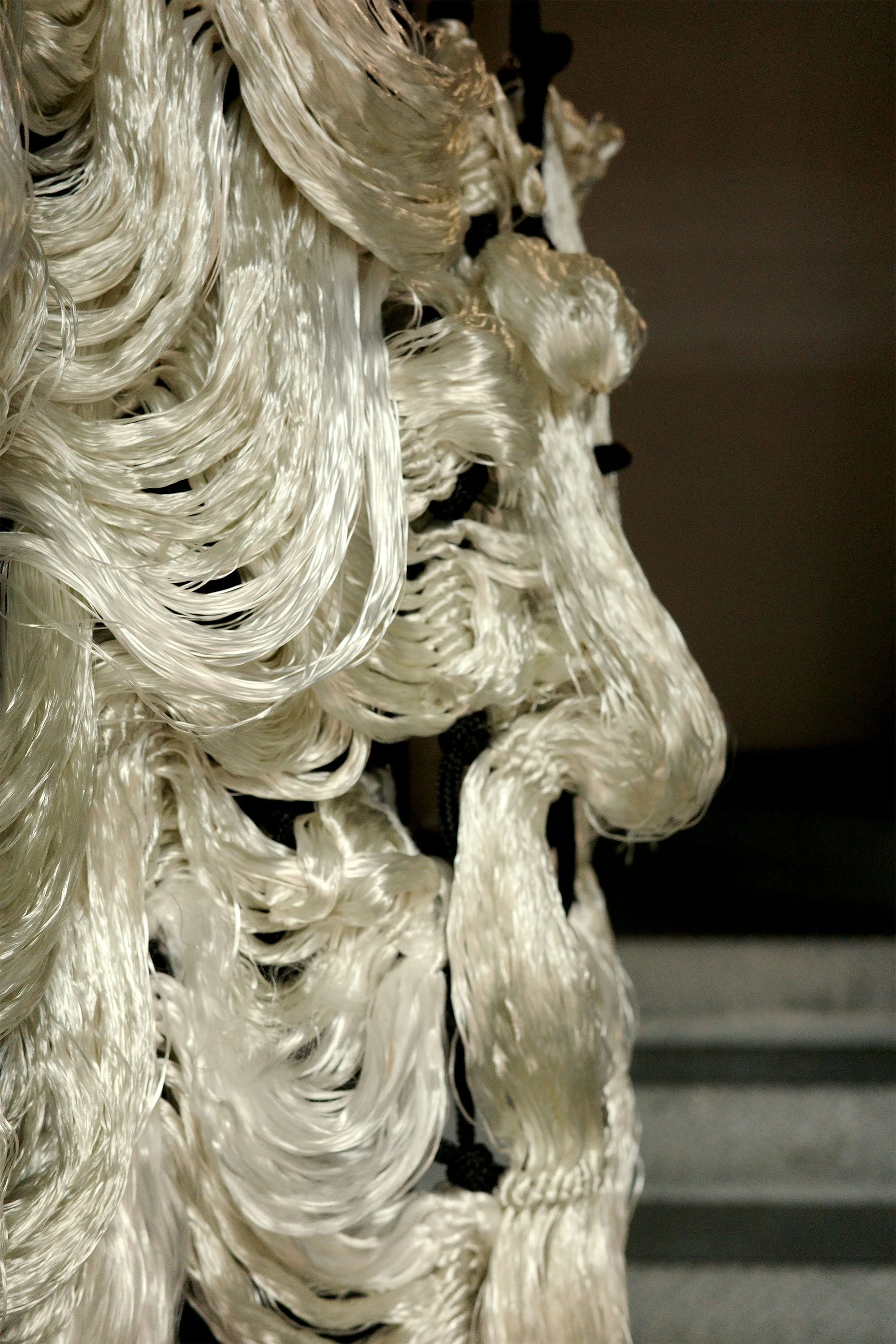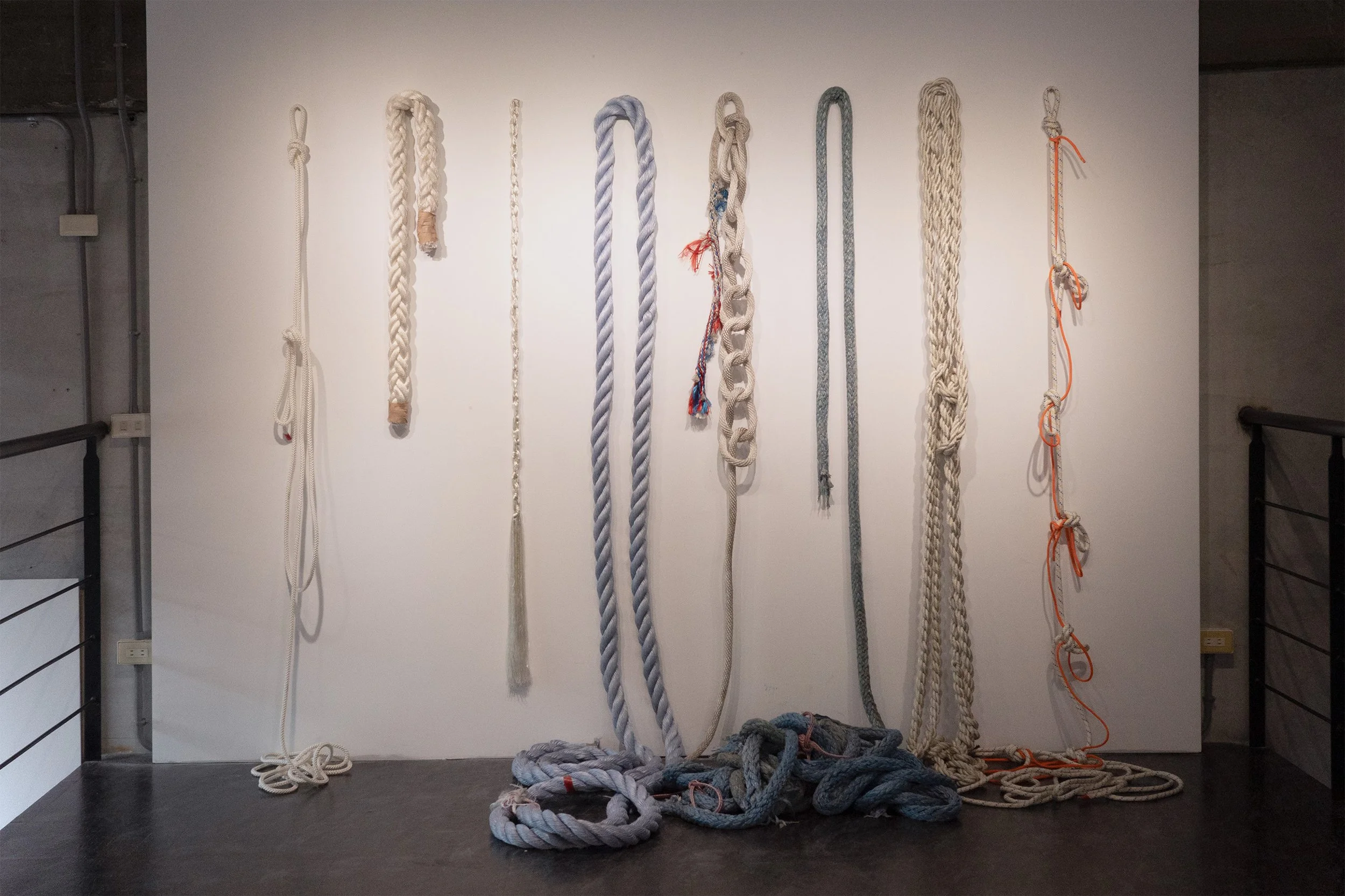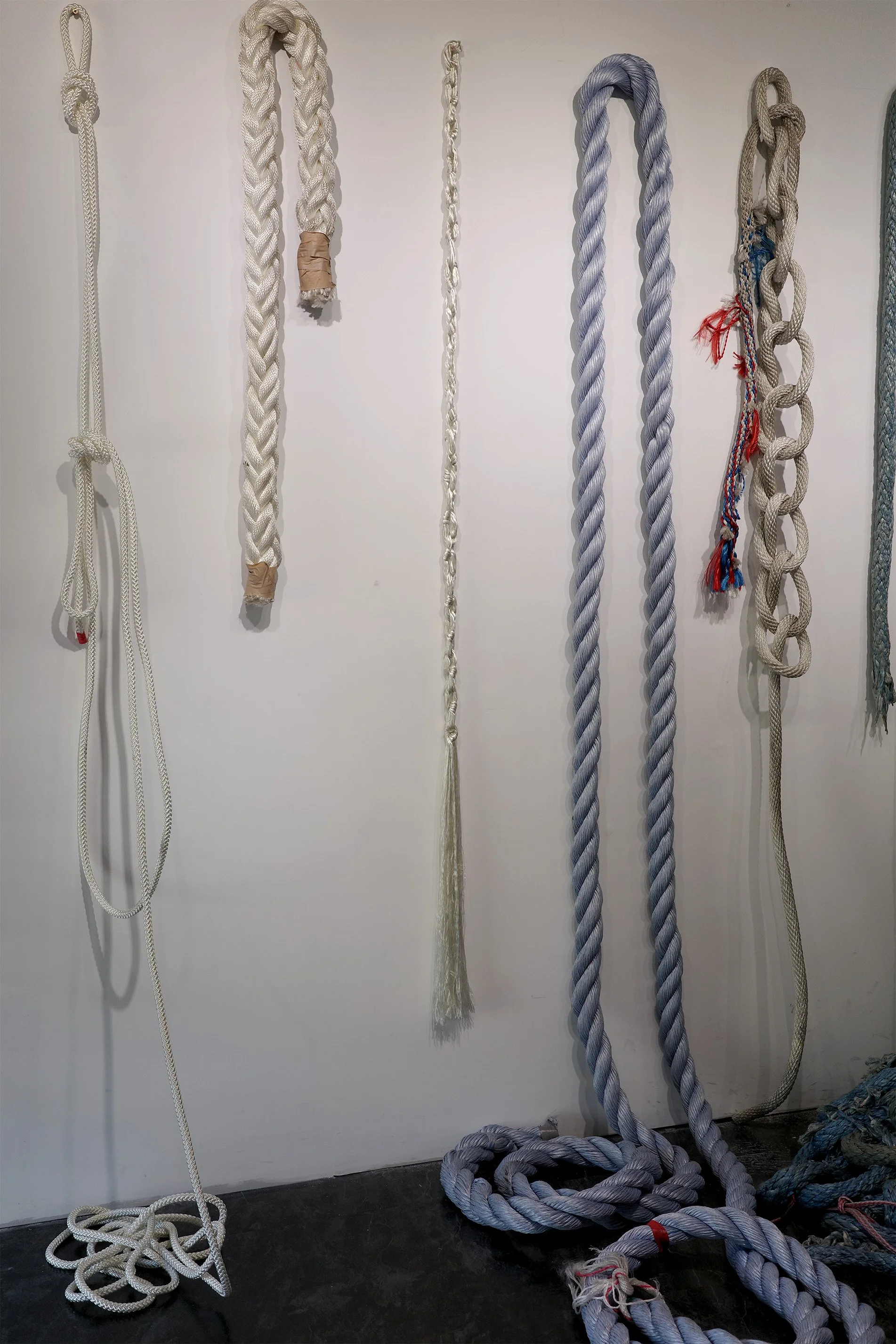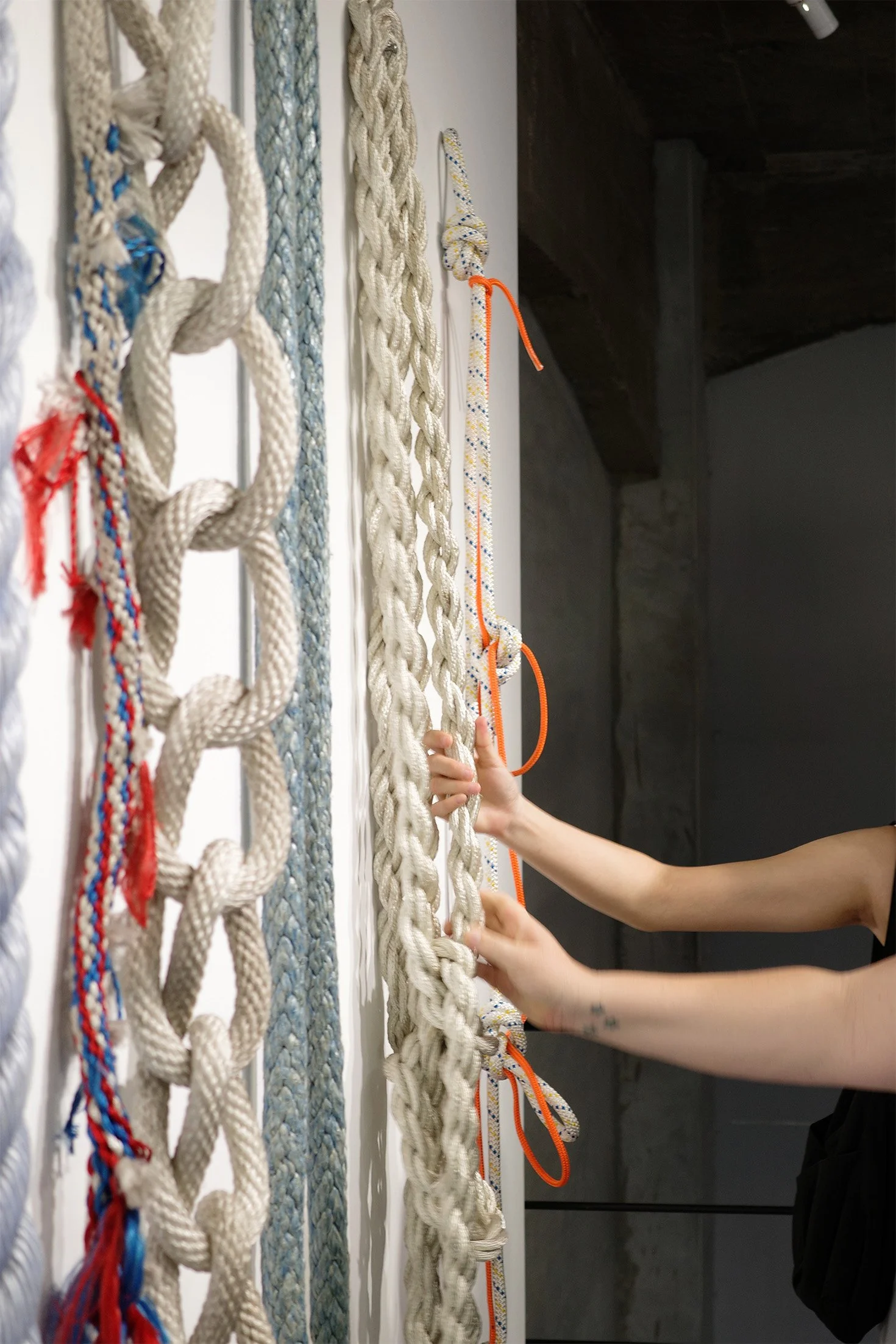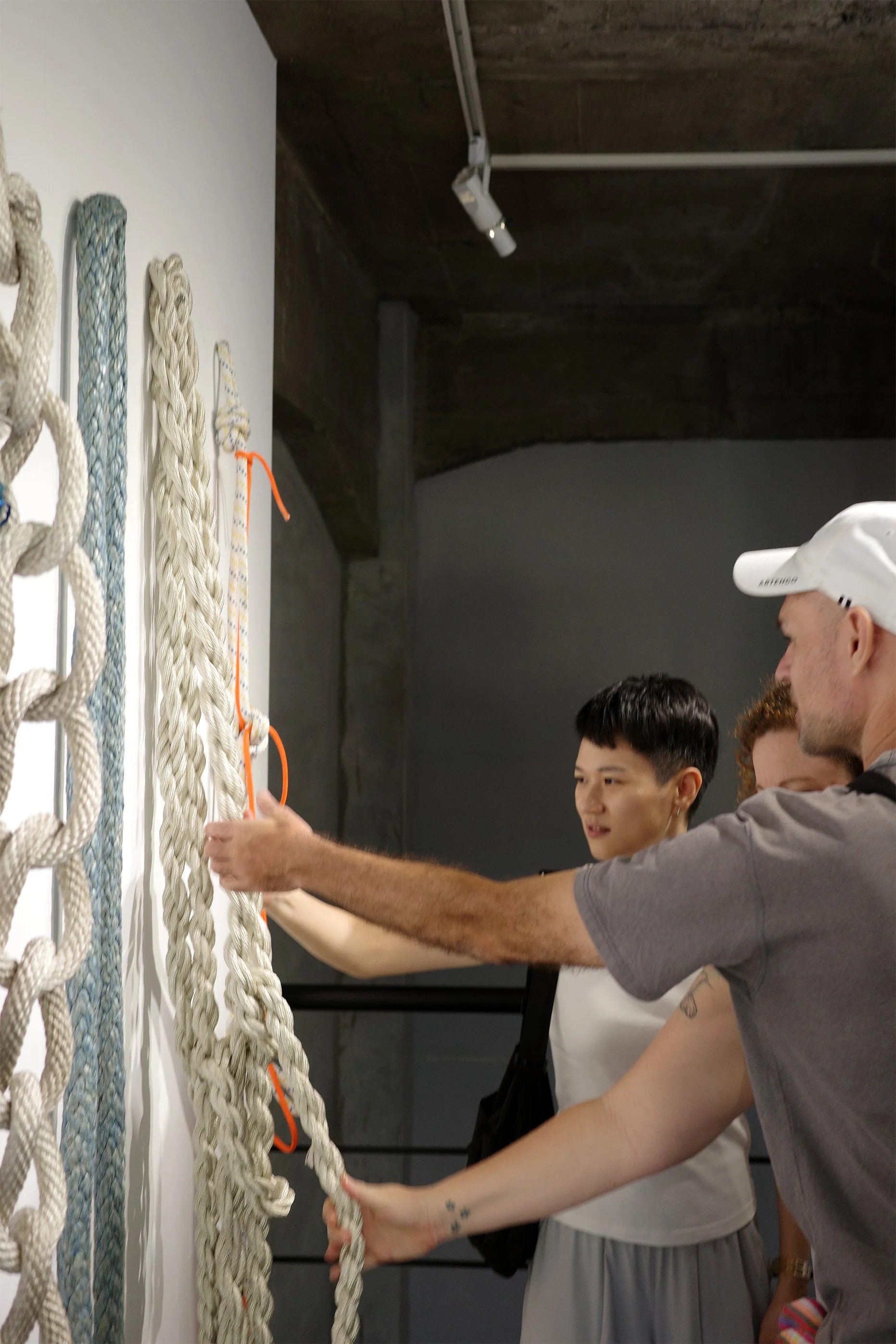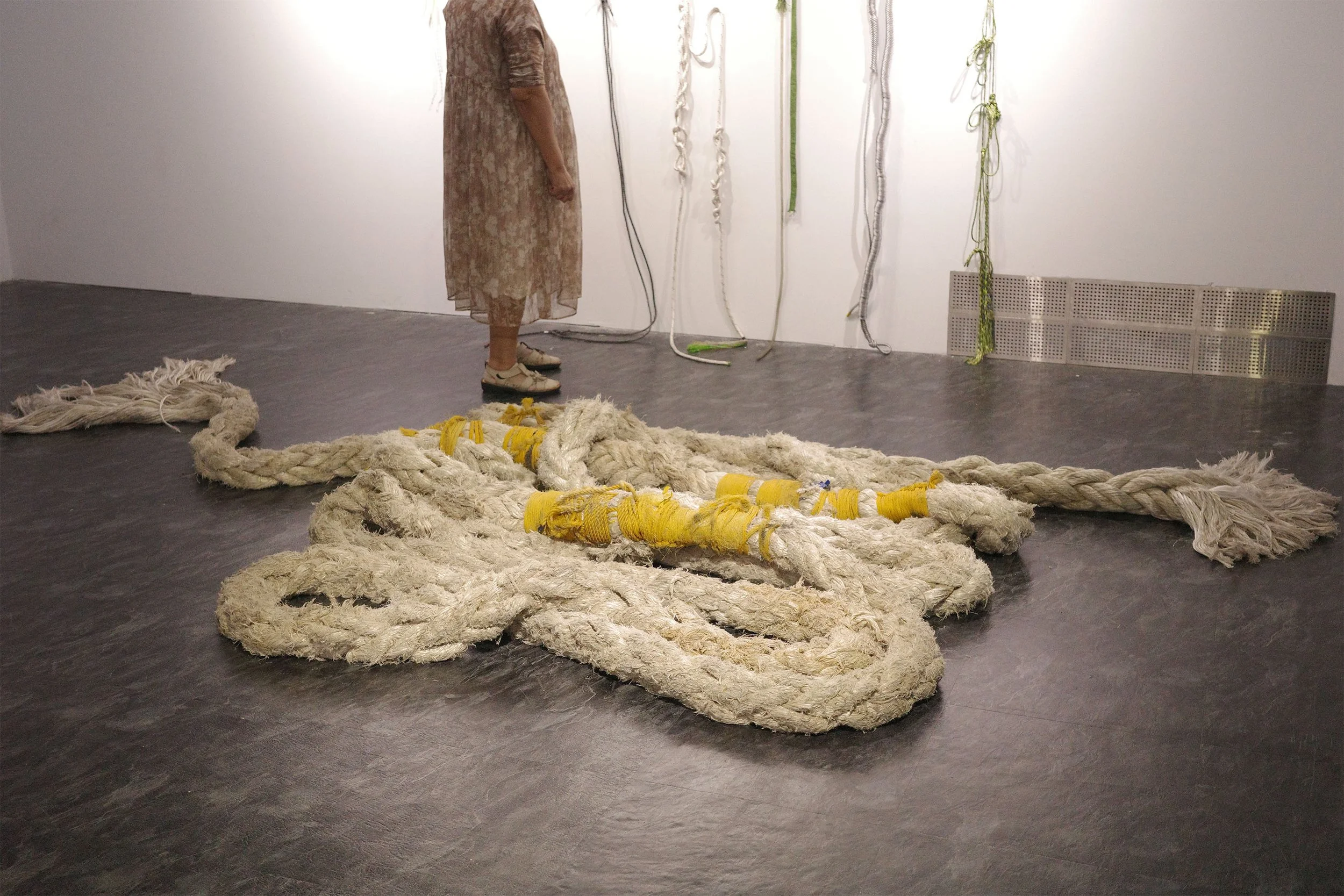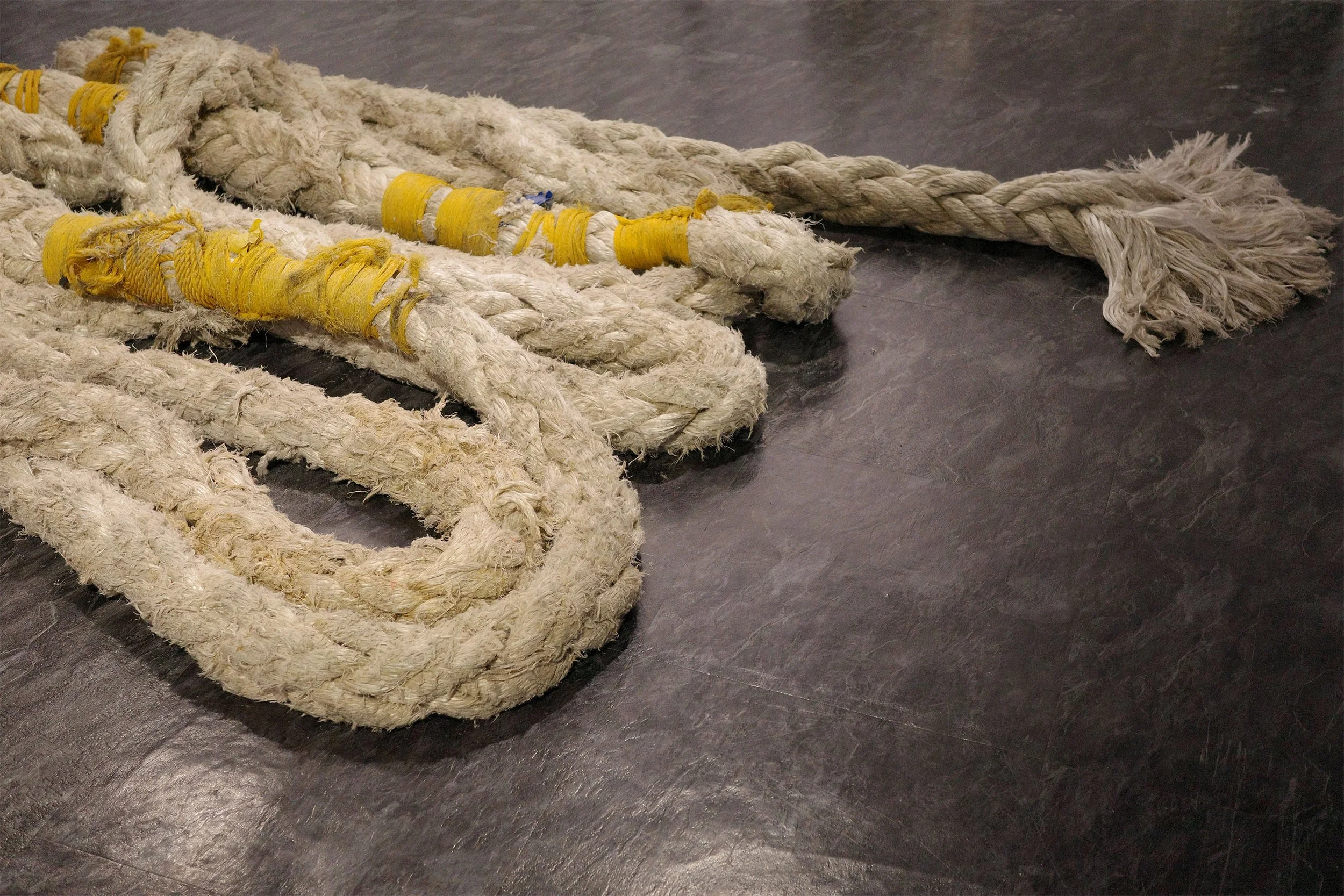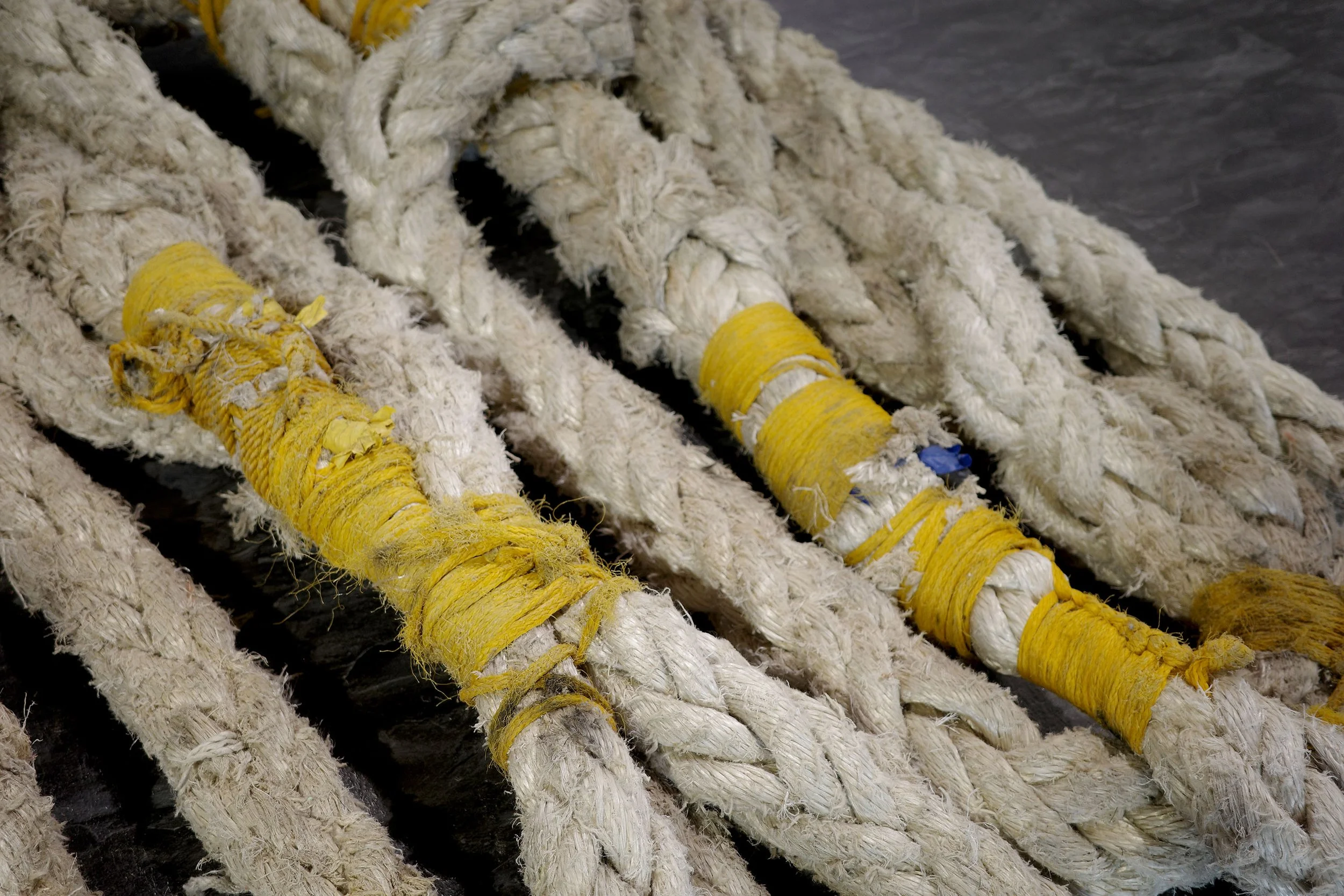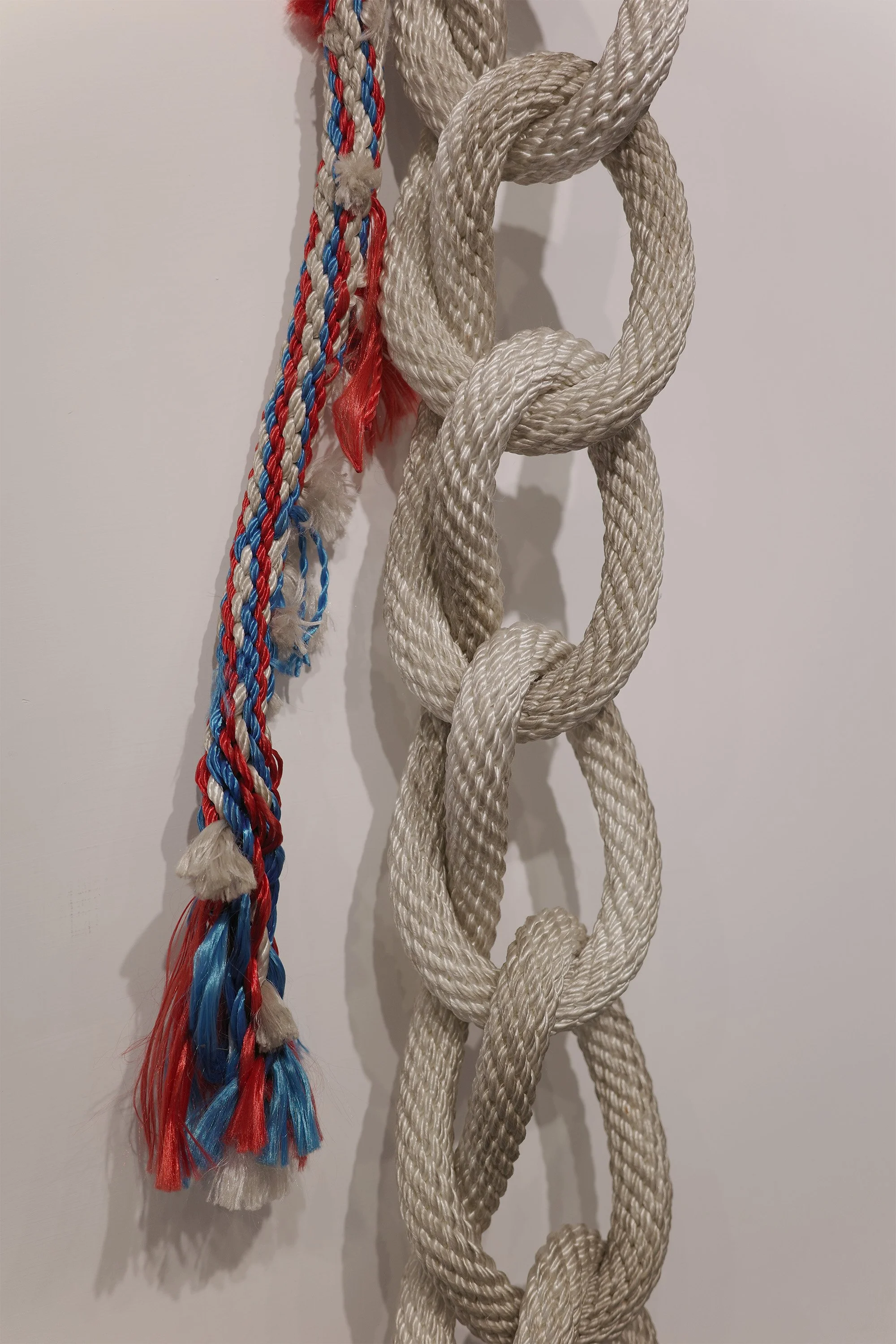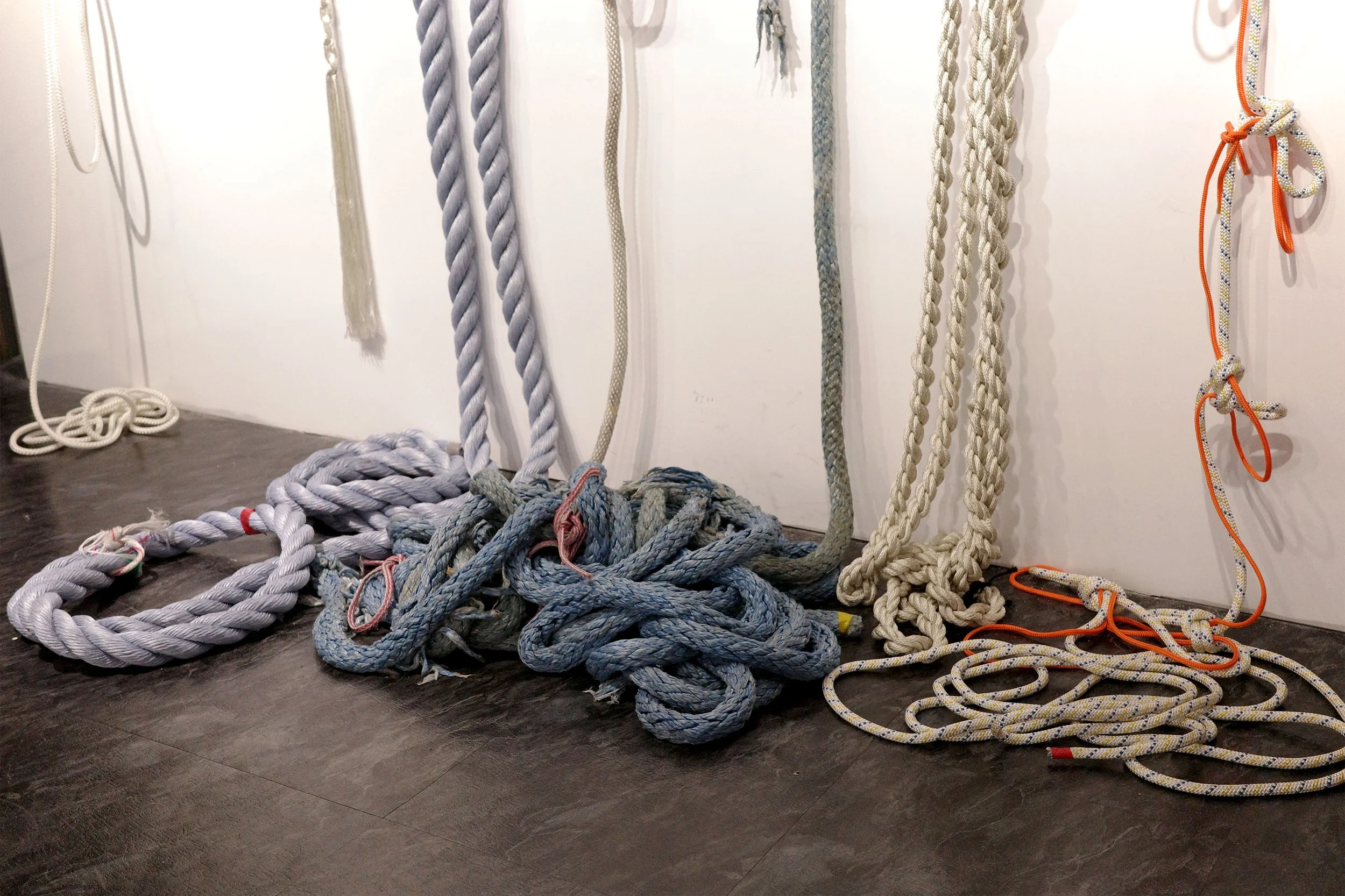Oily Skins at Pier-2 Art Center (2025)
Oily Skins/粼粼 (2025)
This artist-in-residence project is completed by Wild Thing, an artist duo that is me and Yuchen Jao.
WIld Things (Yuchen Jao and Tif Sung) find solace in each other’s respective craft because textiles and ceramics are intimately linked as objects of material and cultural significance. Together we explore symbiotic similarities and cross-examine contradictions of textile and ceramics, subverting disciplinary and material boundaries.
Our Manifesto
Think and act critically on waste. Industrial waste is our origin - not an afterthought.
We begin where we don’t know what to do. Uncertainty is part of the method.
To focus on the materials of art is a political decision. Materials carry histories of labor, power, and capital.
We respect and celebrate the outcome from the properties of materials.
Form and skill, craft and labor are inseparable.
Crafts are vehicles for storytelling.
Physicality and labor-intensiveness are our performance and our resistance.
Slow down. Reclaim slowness, intuition, and the human hand.
The textures of our exhibition originate from the residue of industry—in the frayed ends of ropes, the patina of disuse, the charm of discarded matter. Marine nets are twined into large chunky anchor chains that resemble compulsive scribbles and markings in space. The corrugation of the white ropes are frothy waves that fold into each other endlessly by the shoreline.
Our intention at this residency is clear: to work with industrial leftovers, specifically from factories that manufactured ropes for Kaohsiung’s ocean economies like fisheries and freight shipping cargo ships. We spent our first month here sourcing leftover materials from them in Dashe, Daliao, and Pingtung.
Every factory-owner-staff we met received us with a kind of generosity that caught us off guard. Not only did they offer us materials, they welcomed us into their spaces, and gave us their time and stories. There was one exception where one rejected our request for a visit via phone call, but immediately shipped two large bags of factory leftovers to our studio two days later.
These factories - mostly family-owned - felt gritty and tempered, active but uncertain. They share common narratives emblematic of broader structural changes in Taiwan’s industrial landscape: aggressive competition from China, dwindling labor forces, and increasing reliance on migrant workers.
Pursuing the manufacturing lineage further upstream, we connected with a rope-making machinery manufacturer in Changhua and picked up a retired maypole braiding machine that was commonly used in factories 40 years ago. In the exhibition, the viewers are invited to rotate the machine’s handle and look upward—to see the machine’s continuous, synchronized choreography reflected back to them.
This exhibition would not have been possible without the help of:
金洲海洋科技
興詮企業
偉宏繩業
滿鑫漁具
協和繩索
立盛網具
翰沂國際貿易
涱銘鐵工廠
我們的宣言
對廢棄物的批判性思考與實踐,是我們創作的核心。工業廢料是我們的起點,而非事後的附加。
我們從「不知道怎麼做」開始。不確定性是我們的方法之一。
專注於材料,是一種政治性質的選擇。材料承載著勞動、權力與資本的歷史。
我們尊重材料本身的特性所生成的形式。
形式與技藝、工藝與勞動密不可分。
工藝是一種敘事的載體。
身體性與勞動,是我們的表演,也是我們的抵抗。
慢下來。慢慢重新了解直覺與手感。
本次展覽的質地來自工業的殘留物——繩索散開的末端、使用痕跡累積出的銹斑與氧化、那些被遺棄物件中所蘊藏的獨特魅力。廢棄的漁網被重新纏繞成粗大的錨鍊,像是在空間中不斷重複的塗鴉與筆觸。白色繩索的起伏則如泡沫浪花一樣,沿著海岸線不斷摺疊、堆疊、循環。
我們這次駐村的創作目標明確:以工業剩料為主要材料,特別是來自供應高雄海洋經濟(漁業、貨輪、貨運)所需繩索的工廠。我們花了一個月的時間,從大社、大寮、一路到屏東,親自拜訪並搜集這些材料。
我們遇到的每一位工廠老闆與員工,都以出乎意料的慷慨熱情接待我們。這些多為家族經營的工廠,給人的感覺粗獷但沉穩、仍然運作卻也充滿不確定性。他們的故事反映出台灣產業結構正面臨的整體轉變:來自中國的激烈競爭、本地勞動力的減少,以及對移工需求的上升。
進一步我們向這條製造鏈製造端上游追溯,在彰化認識了一家繩索機械製造商,並從他們那裡取得了一台退役的走馬機 ——這種機器在四十年前的工廠中相當常見。在展覽現場中,觀眾可以親手轉動機器的手把,並抬頭觀看上方鏡面中的走馬機節奏性的編織動作,讓觀察倒映成為參與展覽的一部分。
特別感謝以下單位:
金洲海洋科技
興詮企業
偉宏繩業
滿鑫漁具
協和繩索
立盛網具
翰沂國際貿易
涱銘鐵工廠
